If you are a young athlete and your goal is to build strength, power and size, follow these 10 steps to gain muscle mass and improve your athletic performance for next season. You will need to get the right training program and a well timed and balanced diet to deliver a steady stream of fuel to build muscle tissue. The key to a diet that helps you to build muscle is eating consistently. You can’t forget breakfast, miss lunch and take BCAAs and a protein shake and hope that will help you build muscle. So if you are a teen athlete and want to to get stronger this summer, here are the key 10 steps to gain muscle.
1. Set a Realistic Weight Goal
Setting a realistic weight gain goal depends on your age, height, size, training program, sport and athletic performance goals. To build muscle you may need to gain weight, if your body size and weight is small for your sport. But if your weight is already within a normal BMI range, you can build muscle strength and power, without gaining any weight.
Know Your Body
It is critical to recognize and honor your genetically ideal weight and body size. This is the weight you have when you are training hard and eating well. It is crucial to not try to manipulate your weight away from this range where it naturally falls. If it feels too hard, it is not meant to be. Any extreme measures to move your weight is not sustainable and can have lasting negative health and psychological impacts.
When is the Best Time to Build Muscle?
The best time to build muscle is during your off season, when you have more time to spend in the gym and are not travelling to games and competitions. During the competition season, most athletes expend too much energy to be able to put on any muscle. So if you are a hockey player or a skier, you should be building mass and power in the summer. If you are a cyclist, the best time to build muscle is in the winter.
What is my Best Weight for my Sport?
Understanding the demands of your sport will determine the optimum strength and mass ratio to speed and power. For example, if you play soccer or basketball, you need a lot of speed, stamina and agility. If you are a hockey player, you want to maximize your power and short bursts of speed. If you play football or lacrosse, you need to hold your ground while maintaining your athleticism. These factors determine how to focus your training as well as your optimal strength and muscle mass goal.
How Fast Can I Gain Muscle?
A realistic rate of weight gain while building muscle can range from 0 to 2lbs per week. If you are a slim 15-16 year old male athlete who hasn’t been organized about your diet in the past, you can safely gain up to 2lbs per week over a summer, with the right training program and meal plan. If you are finished growing and within 10lbs of your target weight, then aim for a slower rate of weight gain of 0.5lb every 1-2 weeks, to gain lean muscle and avoid putting on extra weight. As mentioned previously, not everyone will need to gain weight to get stronger and build muscle.
2. Eat Enough For Your Training Needs
Eating enough and eating often is key to building muscle. Your target calories will depend on your training intensity and duration, competitions and whether you do any recreational sports like mountain biking in your free time. You also need to consider if you have an active summer job like landscaping. If some days are a lot more active than others, it gets a little trickier because you need extra food on the days with a higher training load.
Does Bulking and Cutting Help You Build Muscle?
Myth! Contrary to popular belief, it is not necessary or helpful to go through a bulking and cutting phase to build lean muscle. Bulking and cutting is a 2 phase method of muscle gain and fat loss originally used by bodybuilders to prepare for a bodybuilding competition. It has gained popularity as a strategy to recomp, but the truth is it is not a very efficient method to gain lean muscle. Often 20lbs of fat is gained during an aggressive bulking phase and inevitably leads a person to go on a very restrictive diet to shed the extra fat. This type of strategy to gain muscle is not functional for athletes as both the bulk and cut phases hinder performance and athleticism.
Just enough, not too much
There is a sweet spot to building muscle mass and it’s all about matching your Calorie intake to your output with a very small surplus of roughly an extra 200-500 calories.
Add a 200-500calorie snack to build muscle:
- Greek yogurt and banana
- Smoothie
- 2 glasses of milk
- Sandwich
If you eat fewer Calories than you burn, you can’t build muscle – in fact you lose muscle.
On the other hand, if you consume an excessive calorie surplus over what you are burning, you will store the extra Calories as fat and it can slow down your speed and agility. This can happen when an athlete is not training daily and eating out in restaurants such as when traveling during hockey season. Balancing your energy needs helps you to maintain performance as top priority as we try to build more muscle.
Do I Need to Count Calories?
No you don’t need to count calories to build muscle. You will eat enough if you have balanced meals with vegetables, whole grains and protein foods, have 3 meals, 2-3 snacks and eat every 3 hours. If you are unsure how much you need to eat to fuel your training, a sport dietitian can build you a meal plan to fuel your training and build muscle.
3. Get Organized! Plan Your Meals and Snacks
One of the most important steps to gain muscle is to be consistent with your meals and snacks. Whether your summer includes a lot of free time, a summer job, or a week away at the cabin, if you don’t have a regular schedule it is very easy to forget your snacks and drop or delay meals. To reach your summer performance goals, you want to make sure that you have planned and prepared your meals and snacks ahead, so you always have enough food with you and you are never left hungry if your day gets busier than expected.
Remember to have 3 meals and 3 snacks and eat every 3 hours
- Have breakfast by 9am. If you sleep in and miss breakfast, you probably won’t make up that meal later in the day.
- If you have an early morning workout, make sure you have an easy breakfast ready to go
- Pack your lunch the night before
- Make a second lunch in the afternoon if your family eats dinner late
- Have an easy dinner ready to reheat if you have a late workout
Pack enough snacks when you go out for the day
- Take your recovery snack with you for your workout
- Pack a cooler of snacks with you if you are going golfing, hiking, biking or out on a boat.
- Examples of snacks on the go: sandwich or wrap, fruit, chocolate milk, protein bar, protein shake, overnight oats
Have a protein-rich bedtime snack to build muscle overnight, such as:
- Cottage cheese
- Greek yogurt
- Smoothie
- Cereal + milk
Want to know about the latest research on bedtime snacks? Check out our blog post answering, “Are bedtime snacks ok for young athletes?”
Pack lots of food, if you are going camping
- Easy camping foods to build muscle: Ramen, oatmeal, peanut butter, trail mix, beef jerky, protein bars, dehydrated meals, dehydrated eggs, powdered milk, tuna, granola, protein powder, dried fruits, protein pancake mix
4. Get the Right Meal Timing
Remember, if you go a long period of time without eating, you break down muscle. You never want your fuel stores to empty out, or your body turns to breaking down your muscle for energy.
To prevent muscle breakdown, you need to eat every 3 hours, like a battery on trickle charge.
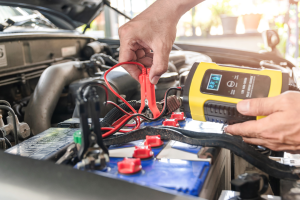
Breakfast helps you to build muscle, so don’t miss it.
For more information on how intermittent fasting makes you lose muscle, see my blog here. Have your breakfast before morning workout, to optimize building muscle. Try not to sleep in past 9am or you miss your chance to have breakfast. If you are up very early for a morning swim or rowing practice, have a light breakfast before practice and a second bigger breakfast after practice.
Plan your meals and snacks every 3 hours over the 12 hours that follow breakfast.
A sample meal plan for an athlete who trains from 10-12 every morning is:
breakfast 8:30am – snack 11am – Lunch 12:30pm – snack 3pm – Dinner 6pm – eve snack 9pm
Notice there is a little snack during the 2 hour morning workout to help top up the fuel stores, this helps prevents muscles from breaking down during a longer workout. Regardless of what time you are training, you still want to hit 3 meals and 3 snacks a day and make sure the timing of them is paired before and after each workout. Take a granola bar to have during long workouts over an hour or between back to back workouts.
5. Drip Feed Your Protein Intake
One of the key steps to gain muscle is to have a steady stream of protein during the day. Including a serving of protein in each meal and snack helps to keep amino acids circulating for continuous muscle synthesis. The International Society of Sports Nutrition recommends having 20-40g protein every 3-4 hours throughout the day for optimal muscle building. Although our bodies will digest and absorb an unlimited amount of protein, the amount of protein needed to build muscle is limited.
We need 3-4 servings of 30g of protein to build muscle and larger servings of protein do not build more muscle.
There are a few exceptions when higher amounts of protein can be used to build muscle, but that is often when a person is on a low Calorie diet or on a low carbohydrate diet so they are using protein for fuel, an inefficient process. Likewise, if someone is fasting, then they may need higher amounts of protein to prevent muscle loss. However, if you are an athlete, these circumstances don’t apply to you and you will want to have a small portion of protein at meals and snacks for maximal protein synthesis.
Want to learn more about protein? Check out this blog post on all you need to know about protein as a young athlete.
6. Never train fasted
Your golden ticket to building muscle is eating carbs before training. If you don’t eat carbs before your workout, your body is missing its main fuel source for high intensity exercise and will immediately start breaking down your muscle for energy. Carbs as a preworkout snack are often called “muscle sparing” because they fuel your workout and spare your muscles from getting broken down for fuel. Likewise, fasted workouts or training on empty is a fast way to lose muscle mass.
Have a meal 2-3 hours or a snack 1-2 hours before every workout.
Preworkout Snacks:
- Overnight oats
- Banana on PB toast
- Cereal + milk
- Smoothie
- Fruit + yogurt
- Sandwich or wrap
- Quinoa salad
7. Fuel Long Workouts with Carb Snacks
Remember, your muscle’s gas tank will only last for an hour of exercise and your body will break down muscles for fuel on an empty fuel tank. So, if your workouts are well over an hour, take a carb snack like a granola bar part way into training to fuel the second half of workout. If you go on long mountain bike rides or hikes on weekends, make sure that you are fueling your recreational activities this summer too.
Have a carb snack during any workout over an hour.
If you are playing 9 hole golf course, swimming at the lake, cycling or hiking – pack enough food and snacks with you to fuel your day. You won’t build as much muscle if you underfuel your workouts and eat a ton later, your body will still break down muscle for the whole time you are underfueled. So, next time you go golfing, hiking, biking or out on a boat, take sandwich, fruit, pretzels, protein shake with you to fuel your day.
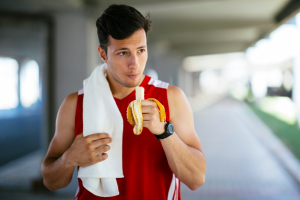
Carb Snacks During Long Workouts:
- Granola bar like a Nature Valley or Cliff bar
- Fruit
- Energy balls
- Bagel
- Dried fruit
- Banana bread or muffin
- Sport drinks
- Gels, gummies or sport bars
8. Always Have a Recovery Snack Right After Training
One of the most important steps to gain muscle is to have a recovery snack right after training. You may have heard that strength training puts stress on your muscles that causes microtears in your muscle fibres. Postworkout, your body continues to break down your muscles until they get fuel and amino acids, the building blocks of protein. Having a recovery snack immediately after workout stops this muscle breakdown and jump starts the muscle repair and rebuilding process in the muscle fibres, making your muscles stronger and bigger.
Have a recovery snack immediately after training within 30minutes, to jump start muscle building.
To optimize building muscle and refill your fuel stores, you need to consume your recovery snack immediately after training, within 30minutes. The best recovery snack has mostly carbs with a little protein. Great recovery snacks contain 30-50g carbs and 10-15g protein. Don’t make the mistake of just having a protein shake post workout! Recovery snacks can be regular foods like a sandwich or a smoothie or it can be a recovery shake that includes at least 30g carbs. Recovery snack can also be your next meal, as long as it is within 30minutes.
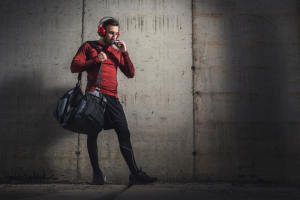
Great recovery snacks are mostly carbs and a little protein.
Recovery Snacks:
- Yogurt + fruit
- Protein bar
- Smoothie
- Chocolate milk
- Sandwich
- Wrap
- Banana bread + yogurt
- Recovery shake
- Overnight oats
- Your next meal – if it is within 30minutes!
9. Get a Regular Sleep Routine
You need optimal hormone levels, recovery and rest for muscle building to occur. In fact, adults need 7-9 hours and teenagers need 8-10 hours sleep a night. You also need a regular sleep schedule where you have the same sleep and wake times, in order to optimize your hormone levels. This study published in 2021 called The effect of acute sleep deprivation on skeletal muscle protein synthesis and the hormonal environment found that one night of sleep deprivation suppresses the normal muscle building process after meals and lowers testosterone levels.
To maximize building muscle and testosterone levels, keep the same sleep and wake time each day and aim for 9 hours sleep each night.
10. Focus on Strength Training and Hypertrophy
Follow a strength training program made by a Strength and Conditioning coach that includes sport specific, functional body weight exercises. Lifting weights to failure will grow more muscles. The idea is to push your muscles to the limit and then let them recover.
If you are doing cardio, do short intense intervals, rather than long bike rides or runs. If you have a goal to gain power, strength and size, don’t do steady state cardio over 30minutes. For optimal conditioning for hockey, baseball, soccer, lacrosse and football, keep the cardio to tempo and high intensity interval sprint work.
Take Action! Set Your Summer Nutrition Goals Now:
It is not easy to stay organized with your diet at all times of day, especially when you are out.
Setting a one or two simple goals can help you follow through with consistent changes that deliver results.
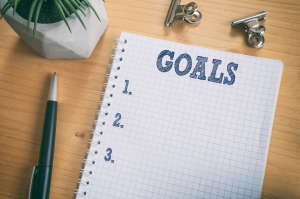
9 summer goals to help you to gain muscle mass:
- Set a timer every 3 hours to remind you to eat 6 times a day.
- Have breakfast before 9am every morning.
- Eat before training.
- Have a snack during long workouts and between back to back workouts.
- Have a recovery snack after training.
- Make a second lunch or substantial snack every afternoon.
- Include protein and carbs at each meal.
- Have a bedtime snack with protein every night.
- Get to bed by 11pm and wake at 8am every morning, so you get 9 hours sleep a night.


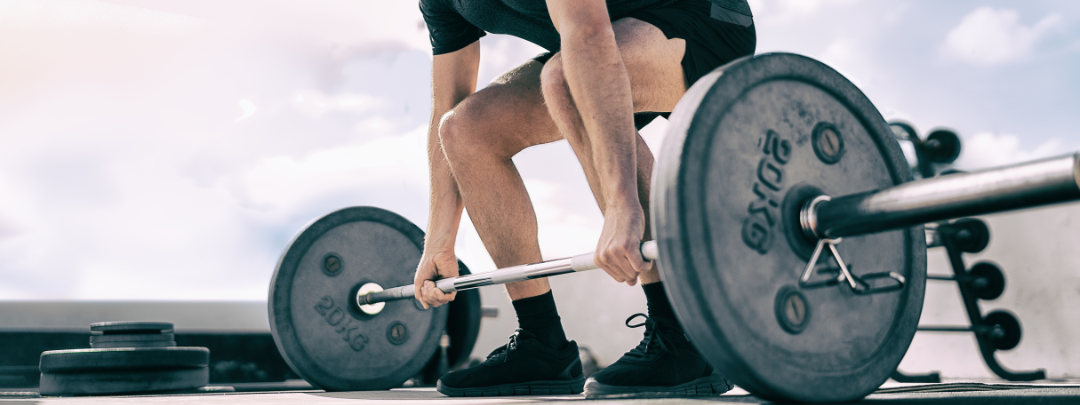
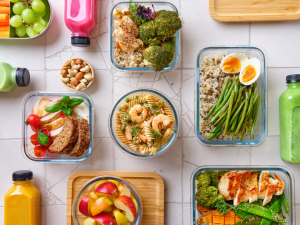

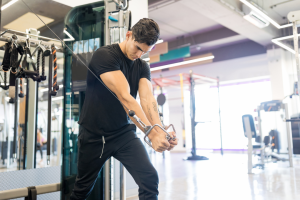






5 Comments